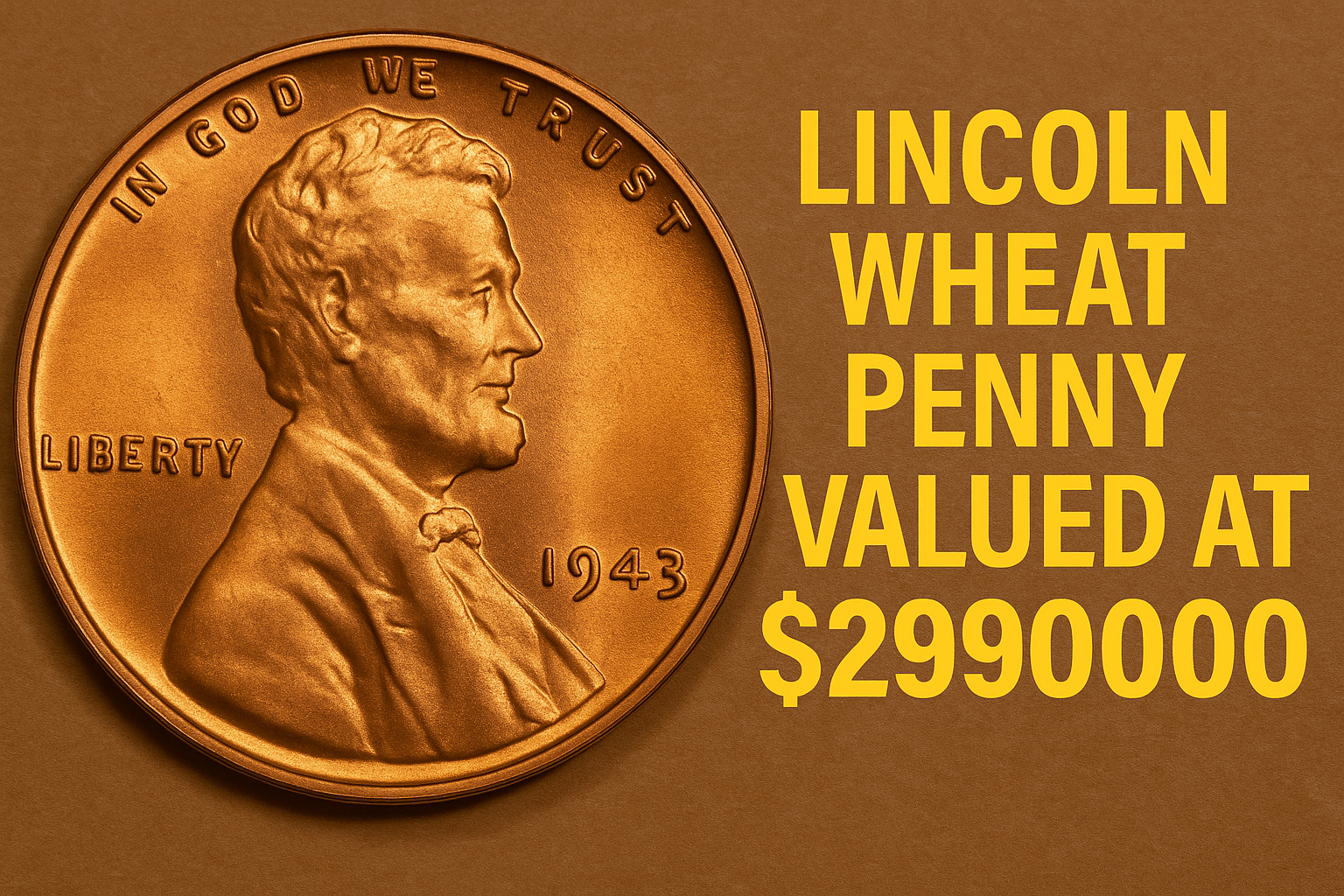The Lincoln Wheat Penny, a staple in American coinage, has captivated collectors and numismatists for decades. While most of these pennies are worth just one cent, certain rare variants have fetched astonishing prices at auctions.
One such penny, the 1943 Copper Wheat Penny, has been valued at up to $2,115,000. Despite its age and rarity, this coin—and others like it—may still be in circulation, hidden in pockets, jars, or even cash registers. This article delves into the history, rarity, and value of these exceptional coins, offering insights into how to identify them and their significance in the world of coin collecting.
The 1943 Copper Wheat Penny: A Wartime Error
Historical Context
In 1943, during World War II, the United States faced a significant copper shortage. To conserve copper for military use, the U.S. Mint switched from producing copper pennies to zinc-coated steel pennies. However, a small number of copper planchets from 1942 accidentally remained in the production line, leading to the minting of approximately 20 to 40 copper pennies in 1943. These coins are now among the rarest and most valuable in American numismatics.
Rarity and Value
The 1943 Copper Wheat Penny’s rarity stems from its accidental production and the limited number in existence. One such penny sold for $1.7 million at auction in 2019, highlighting its immense value. Experts believe that if a perfect, uncirculated example were to surface, its value could exceed even these record-breaking numbers, potentially reaching up to $2,115,000.
Identifying the Coin
To identify a 1943 Copper Wheat Penny, collectors should look for the following characteristics:
- Year and Mint Mark: The coin should be dated 1943 with a mint mark (D, S, or none).
- Color: Unlike the typical steel pennies of 1943, this coin will have a copper-brown hue.
- Weight: A copper penny weighs approximately 3.11 grams, while a steel penny weighs about 2.7 grams.
- Magnet Test: Copper is non-magnetic, whereas steel is magnetic. A magnet will not attract a copper penny.
Other Valuable Lincoln Wheat Pennies
While the 1943 Copper Wheat Penny is the most renowned, several other Lincoln Wheat Pennies are highly valuable due to minting errors or limited production. These include:
1909-S VDB Penny
Minted in San Francisco, the 1909-S VDB penny features the designer’s initials, “VDB,” on the reverse. Due to public outcry over the prominence of the initials, they were removed after a short period, making this coin extremely rare. Only 484,000 were minted, and well-preserved examples can fetch over $100,000 at auction.
1955 Doubled Die Penny
The 1955 Doubled Die penny exhibits a noticeable doubling of the date and lettering, a result of a minting error. Approximately 20,000 to 24,000 of these coins were released into circulation, and those in excellent condition can command prices exceeding $100,000.
1944 Steel Penny
In 1944, most pennies were made from copper, but a few steel planchets from 1943 were mistakenly used, resulting in the 1944 Steel Penny. This coin is highly sought after, with some examples selling for over $100,000.
How to Spot a Rare Lincoln Wheat Penny
Identifying a rare Lincoln Wheat Penny involves careful examination and knowledge of key features:
- Examine the Date and Mint Mark: Look for pennies dated between 1909 and 1958, as these are part of the Wheat Penny series. Pay attention to the mint mark (D, S, or none) to determine its origin.
- Inspect the Reverse: The reverse side of the coin features two stalks of wheat. Variations in the design or errors in minting can increase a coin’s value.
- Check for Minting Errors: Look for signs of doubling, misprints, or unusual wear that could indicate a minting error.
- Use a Magnifying Glass: A magnifying glass can help reveal fine details and potential errors that are not visible to the naked eye.
The Importance of Professional Grading
Once a potentially valuable Lincoln Wheat Penny is identified, it’s crucial to have it professionally graded. Grading assesses the coin’s condition and authenticity, which significantly impacts its value. Professional grading services, such as the Numismatic Guaranty Corporation (NGC) or the Professional Coin Grading Service (PCGS), provide certification that can enhance a coin’s marketability and value.
The Thrill of Coin Collecting
The discovery of a rare Lincoln Wheat Penny can be an exhilarating experience for collectors. The thrill lies not only in the potential financial reward but also in the historical significance these coins carry. Each penny tells a story of its time, from the early 20th century to the challenges of wartime production.
Conclusion
While the Lincoln Wheat Penny is commonly associated with its face value of one cent, certain rare variants have transcended their humble origins to become highly coveted collector’s items. The 1943 Copper Wheat Penny, valued at up to $2,115,000, stands as a testament to the serendipitous nature of coin collecting. By understanding the history, rarity, and identification methods of these exceptional coins, collectors can embark on a rewarding journey into the world of numismatics.
What is the value of a 1909-S VDB penny?
The value varies based on the condition. Well-preserved examples can fetch over $100,000 at auction.
Are 1955 Doubled Die pennies common?
No, only about 20,000 to 24,000 were released into circulation, making them rare and valuable.
How do I get my rare penny professionally graded?
You can submit your coin to professional grading services like the Numismatic Guaranty Corporation (NGC) or the Professional Coin Grading Service (PCGS).
| Home | Click Here |
| Coin | Click Here |
